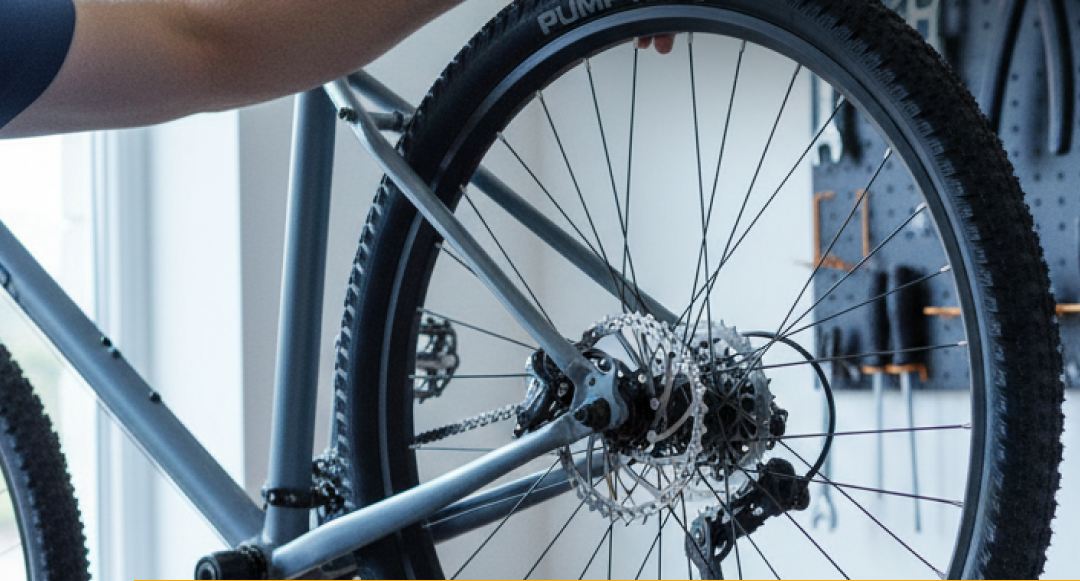Getting Your Bike Ready for Winter?
Here’s Everything You Need to Know
Winter is coming faster than you think, and if you’re like most of us, you’re probably asking yourself: “What about the bike?”
Will you just toss it somewhere in the garage and hope for the best, or will you do it properly?
Trust me, after years of riding and several costly spring services, I know the second option pays off.
You might think that preparing your bike for winter is only for obsessed bikers.
But even if you’re a weekend warrior or just go for the occasional ride, proper preparation will save you not only money but, more importantly, nerves in the spring.
Why Even Bother About Winter?
Probably all of us remember our first winter with a bike.
We thought it was enough to just put it in the garage and head out again in spring.
Well, the result?
A rusty chain, cracked tyres, and brakes that only pretended they wanted to stop.
Spring service then cost almost as much as buying half a new bike.
Since then, we take the time each autumn for proper preparation.
And believe me, it’s worth it.
Tyres: Don’t Underestimate the Only Thing in Contact with the Ground
How to know your tyres need attention?
First, look at the tread.
Do you already see bare rubber? Cracks on the sides? Or uneven wear?
All of these are signs it’s time for a change.
If you’re lucky enough to ride on Rubena tyres with Clever Face technology, you’ve got it easier.
Those little smiling faces show you exactly how much life is left.
When the smile turns into a sad face, it’s time for new tyres.
Chain and Gears: The Heart of Every Bike
This one’s simple – a dirty or dry chain won’t survive spring.
It’s not dramatizing; it’s a fact.
Steps:
- Degrease everything – chain, cassette, chainrings. Use a proper degreaser, not just a rag.
- Clean to the last link – yes, it’s a hassle, but it pays off.
- Protective oil – not regular chain oil! Winter protective oil is thicker and offers better protection.
- If you don’t have electronic shifting, think about the cable housings too – a drop of oil on the ends helps prevent rust and stiffness.
Check for cassette wear. When the teeth start to look like shark fins, it’s time for a replacement.
The same goes for the chain. If you have a chain wear gauge, use it. If not, an experienced mechanic can spot wear at first glance.
Brakes: Safety First
Winter moisture and frost can wreak havoc even on good brakes.
Check your brake pads first. If you already see metal plates, the pads are done.
It’s better to replace them preventively than to risk it.
Hydraulic brakes need special care. Check if the brake “holds” and doesn’t sink when pressed.
If it does, there’s likely air in the system or oil leaking somewhere.
Where Should Your Bike Spend the Winter?
This is the eternal question for cyclists.
Ideally, store your bike where:
- The temperature is around 5–20°C
- Humidity is low (below 60%)
- There’s no direct sunlight
Where not to leave your bike over winter:
❌ An unheated damp cellar – rust guaranteed
❌ Outdoor shelter – temperature shocks are bad for the bike
How to Store the Bike
The best option is to hang it by the frame.
If that’s not possible, keep it standing, but rotate the wheels a few times during winter (so the tyres don’t rest on the same spot).
Your tyres will reward you with longer life.
And beware: Never store a bike on flat tyres.
They’ll deform, and in spring, you’ll probably need new ones.
Electric bike
E-bike?
Never store the battery completely discharged or fully charged.
The ideal level is 50–80%. Recharge it a bit every 2–3 months.
Batteries hate frost, so better take it indoors.
If you have lights on your bike, remove the batteries.
They can leak over winter and ruin the contacts.
Store batteries dry and at room temperature.
Conclusion: Winter Is Not the Enemy
Winter isn’t the end of the world for your bike.
It’s simply part of the cycling year that you can handle.
A few hours of autumn prep will save you weeks of spring hassle.
And most importantly, don’t think of it as a necessary evil.
It’s a time when you can care for your bike and maybe plan some upgrades for next season.
Final tip: If you’re not sure about any step, visit your local bike service.
It’s better to pay for advice now than for repairs in spring.
Your bike will thank you with reliability next season.
And you’ll enjoy your first spring ride without worries.

